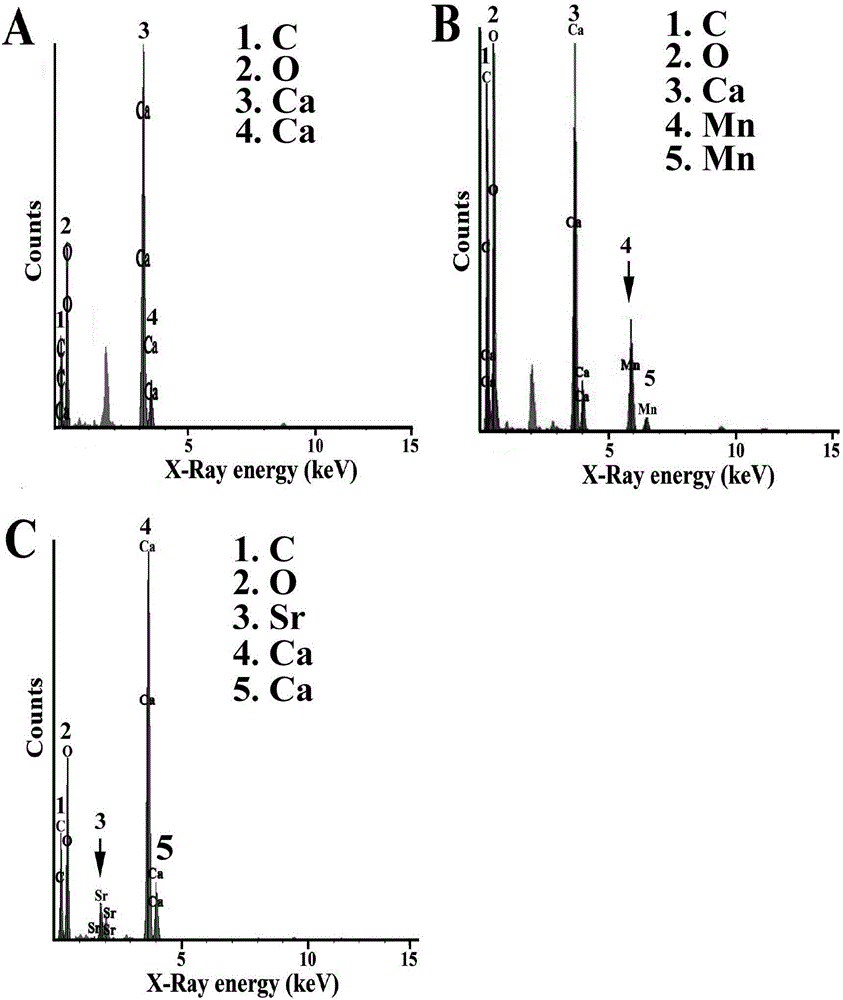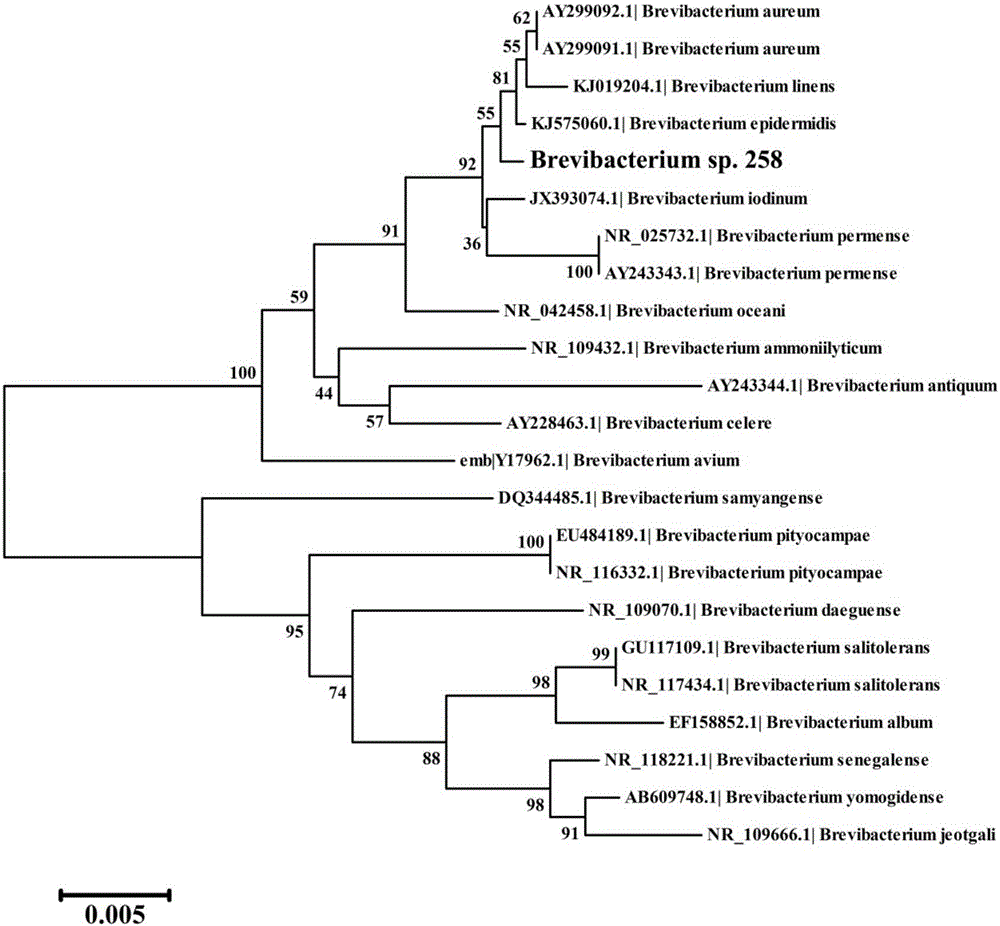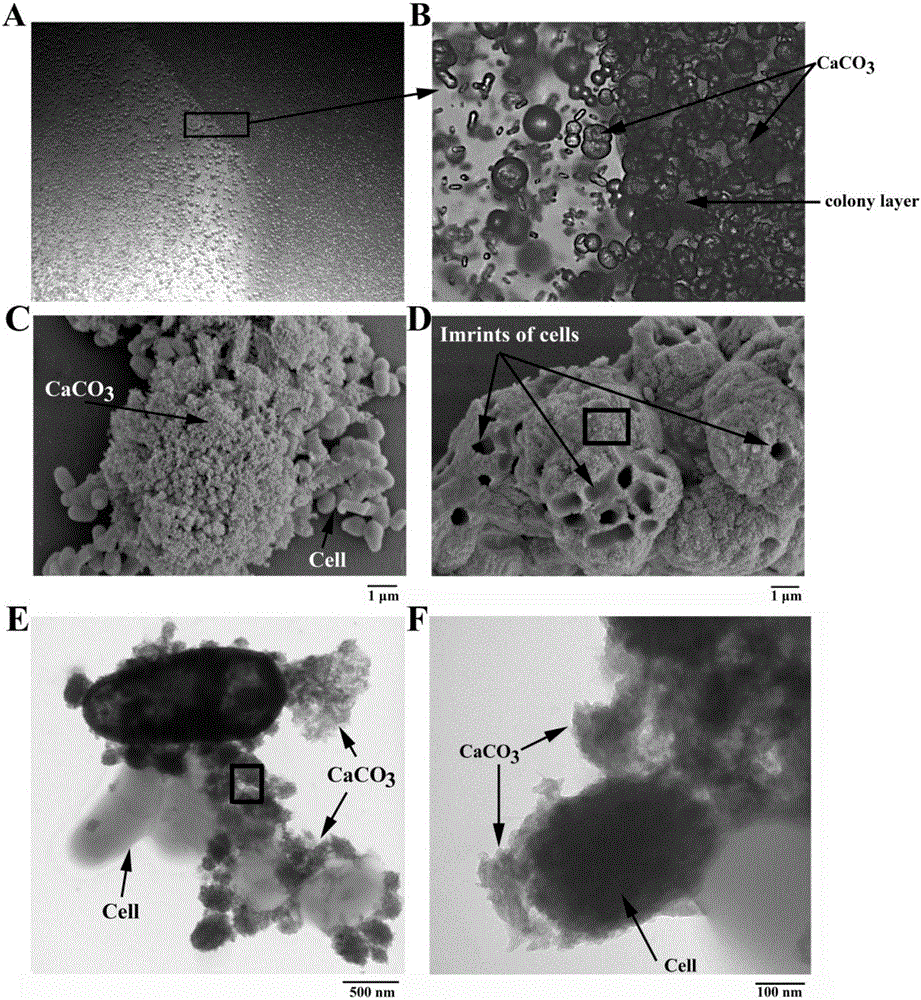Calcium carbonate producing actinomycetes and application thereof
A technology of actinomycetes and calcium carbonate, which is applied in the restoration of bacteria and contaminated soil, water/sludge/sewage treatment, etc., can solve the problems of non-degradable and difficult treatment, achieve strong tolerance and improve alkalinity Effect
- Summary
- Abstract
- Description
- Claims
- Application Information
AI Technical Summary
Problems solved by technology
Method used
Image
Examples
Embodiment 1
[0030] Embodiment 1: Isolation and identification of the center bacterial strain used in the present invention
[0031] After the sediment samples taken from the Yellow Sea of China were serially diluted with normal saline, 100uL of the suspension was coated with solid 2216E medium, cultured at 28°C for 24 hours, single clones were picked, and re-stretched on the 2216E plate for separation and purification. After the purified single clone is obtained, the strain is preserved. The obtained purified strain was first tested positive for urease with 9219 medium (peptone 1g, potassium dihydrogen phosphate 2g, sodium chloride 5g, urea 20g, glucose 1g, pink 0.012g, agar powder 15g, old seawater 1000ml, pH 6.8±0.2) The screening of bacterial strain, the bacterial strain that screens out is further used to produce calcium carbonate medium (nutrient broth 3g, sodium bicarbonate 2.12g, ammonium chloride 10g, anhydrous calcium chloride 16.65g, urea 20g, agar powder 15g, old seawater 100...
Embodiment 2
[0032] Example 2: Ability of bacterial strain BS258 to precipitate calcium carbonate and tolerance to calcium ions
[0033]The morphology and ability of the strain BS258 precipitated calcium carbonate were identified. Select 9219-base liquid medium (peptone 10g, yeast powder 5g, anhydrous calcium chloride 3.33g, sodium acetate 2g, potassium dihydrogen phosphate 2g, nickel sulfate 0.005g, manganese sulfate 0.005g, sodium chloride 5g, urea 5g , glucose 20g, old seawater 1000ml) induced BS258 to precipitate calcium carbonate, and after cultivating at 28°C and 160rpm for 5 days, the precipitated calcium carbonate was collected for optical microscope, scanning electron microscope and transmission electron microscope observation, as figure 2 As shown, calcium carbonate particles precipitated by BS258, bacterial cell imprints left on larger calcium carbonate particles, and bacterial cells encapsulated by calcium carbonate can be observed. At the same time, the pH change of the cult...
Embodiment 3
[0035] Example 3: Ability of strain BS258 to co-precipitate heavy metals
[0036] Add 5mM different metal ions (Cu 2+ ,Zn 2+ ,Mn 2+ ,Sr 2 + ), inoculate the BS258 seed solution at a volume ratio of 1:100, and at 28° C., after cultivating at 160 rpm for 5 days, collect the precipitate and carry out scanning electron microscope-X-ray energy spectrum analysis, such as Figure 5 As shown, in addition to carbon, oxygen, and calcium elements, the sediment also contains corresponding heavy metal elements, indicating that heavy metal ions in the solution can co-precipitate with calcium carbonate, so as to achieve the purpose of remediation of heavy metal pollution. At the same time, the coprecipitation of the BS258 bacterial strain was measured to remove heavy metal ions. As shown in Table 1 below, BS258 had the strongest removal ability for manganese ions and strontium ions in the solution, and more than 99% of the manganese ions and strontium ions were Calcium carbonate was co-...
PUM
 Login to View More
Login to View More Abstract
Description
Claims
Application Information
 Login to View More
Login to View More - R&D
- Intellectual Property
- Life Sciences
- Materials
- Tech Scout
- Unparalleled Data Quality
- Higher Quality Content
- 60% Fewer Hallucinations
Browse by: Latest US Patents, China's latest patents, Technical Efficacy Thesaurus, Application Domain, Technology Topic, Popular Technical Reports.
© 2025 PatSnap. All rights reserved.Legal|Privacy policy|Modern Slavery Act Transparency Statement|Sitemap|About US| Contact US: help@patsnap.com



